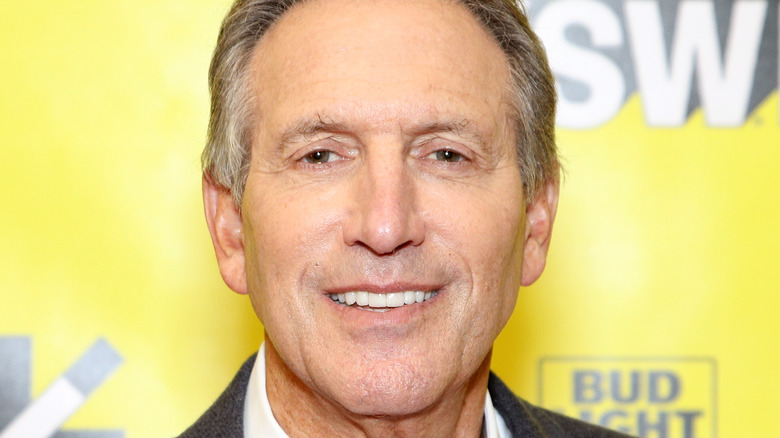The Real Reason Howard Schultz Opposed Nonfat Milk At Starbucks
Milk can be a touchy subject. It's 2022 and there are so many milk substitutes for cooking and drinking, it's difficult to believe that anyone would be against any type of milk, of the dairy variety or otherwise, but Howard Shultz, the former CEO of Starbucks, once had a real dislike for nonfat milk.
According to Starbucks' website, back in 1989, amidst Tiananmen Square protests, the Exxon Valdez spilling 11 million gallons of oil, and Nintendo's Gameboy making it's way into the hands of American teenagers and kids everywhere (via The People History), Shultz shared with the world that he was not a fan of nonfat milk.
How can this be? When it comes to lower fat milk, per US Dairy, you are getting the same 13 essential nutrients that you get when you drink whole milk. However, nonfat milk might be a little kinder to your waistline. The site notes that a serving of whole milk will set you back 150 calories and 8 grams of fat; However, if you swap whole milk for nonfat, you can save yourself 70 calories and 8 grams of fat.
Clearly, nonfat milk has a lot going for it, so why was Shultz so ready to give it the old Heisman stance?
The customer gets what the customer wants
According to Starbucks, its fearless former leader did not like the taste of nonfat milk and felt whole milk made for better espresso drinks. To be fair, he kind of has a point. Per Food Network, whole milk is thicker and creamier when it is frothed for our lattes, cappuccinos, and lattes. However, whole milk is also heavier so it takes longer to whip-up into those beautiful clouds of foam. Still, lower fat milk's health merits can't be denied and Food Network shares that it too can not only foam up, but can hold its form for a longer period of time.
What was the turning point that helped Shultz see the nonfat milk light? Starbucks goes on to explain that the customer is always right and what the customer wants, the customer gets. Once the coffee shop started losing coffee orders, Shultz had a change of heart and not only opened the door for nonfat milk to be used, but ushered in the explosive trend of using dairy alternatives, which include everything from soy to oat milk to coconut and almond milk.

